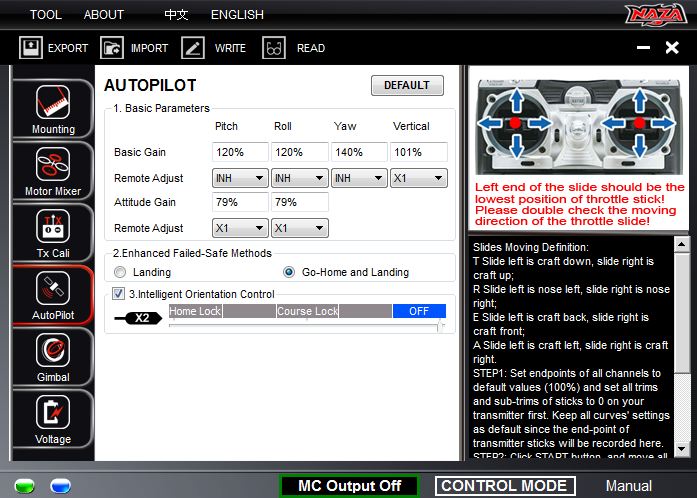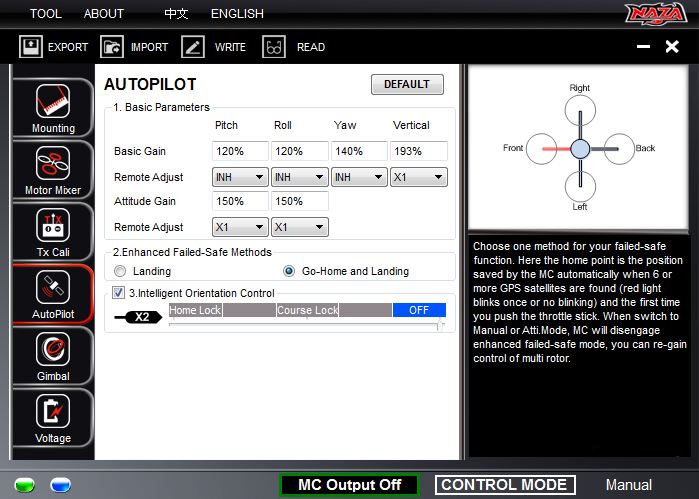Flight
DJI F450 Naza + GPS FPV/AP Multicopter
My previous Xaircraft X4 build never really served the purpose for which I had intended it to be used for; an AP/FPV platform with a reliable autopilot fail safe. The problem with my X4 was that the Avroto motors were quite large and created lots of resonating vibration throughout the frame. This created lots of jello, or rolling shutter, in my GoPro’s video. My previous choice of flight controller worked alright, but it required lots of adjustments and was not a reliable autopilot fail safe.
To correct the resonating vibrations, I decided to start with smaller 9″ props, higher KV motors and a 4S battery. My hope was to increase the RPM and frequency that the motors operate at, reducing low frequency resonating vibrations to the flight controller and GoPro. I also added a vibration dampening gel pad beneath the gopro. With the 4S 3300mAh Nano Techs I get just over 14 minutes of flight time. The T-Motors hardly exceed ambient temperature after a 14 minute flight in 800 F weather, whereas the original NTMs reached over 1800 F within a few minutes.
Bill of Materials:
[Qty. 4] T-Motor MT2216 900KV** [Qty. 1] DJI Naza GPS [Qty. 1] DJI F450 Flame Wheel [Qty. 4] Hobbyking 20A ESC [Qty. 3] 4S 3300mAh Nano-Tech LiPo [Qty. 2] 3.5mm Bullet Connectors [Qty. 1] XT60 Connectors [Qty. 4] Graupner E-Props 9×5 R/L [Qty. 1] Align PU Adhesive Gel
** Originally I had purchased NTM 28 motors from Hobbyking. Upon their arrival, the lack of quality control was clear (damaged bearings and a bent adapter). The motors reached extremely high temperatures under Hobbyking’s specified ratings and frequently bind when armed. One of the motors failed in flight after binding at 90ft in the air. I DO NOT recommend NTM motors and I have chosen to use the T-Motors instead.
I began by soldering bullet connectors to the motor side of each speed controller and removing the heat shrink.
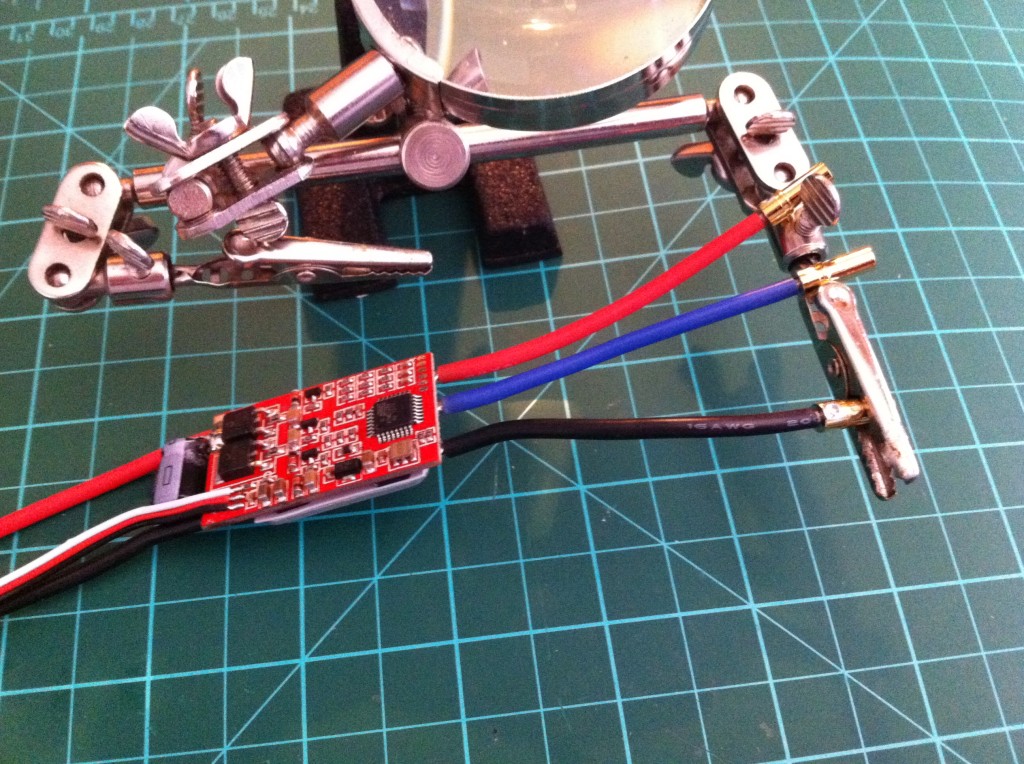
This is the programming adapter I used to flash the speed controllers. The adapter connects to a USBasp programming card.
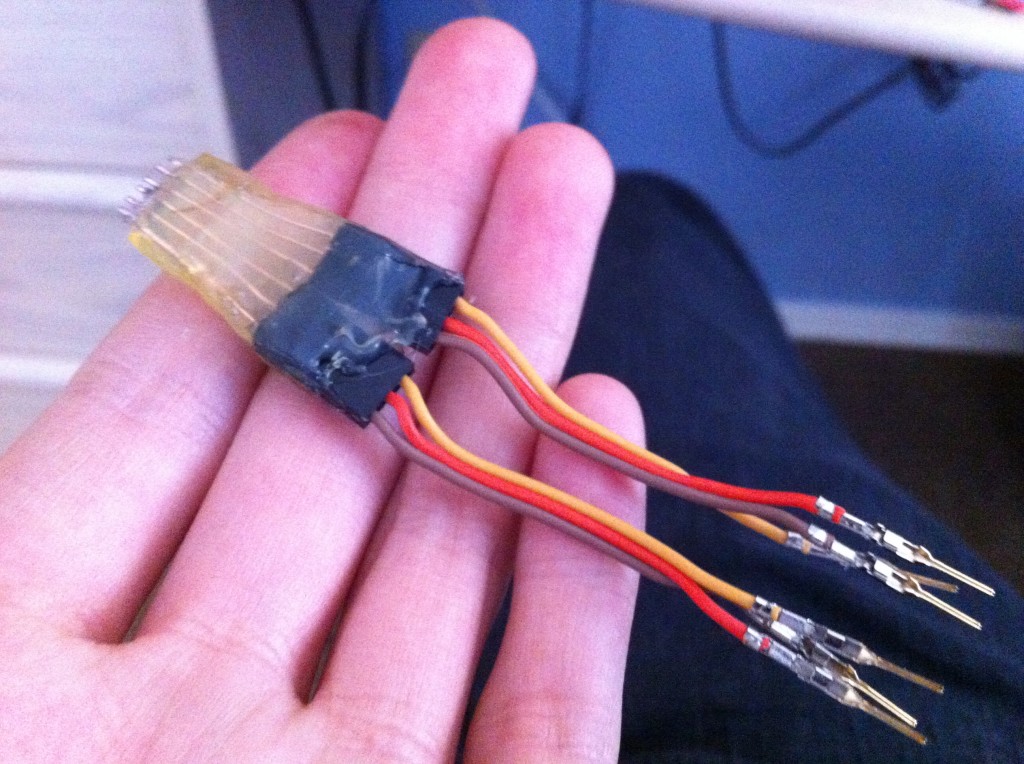
The adapter aligns with the six programming pads of the 20A ESCs. Flashing the ESCs follows the same process as outlined here.
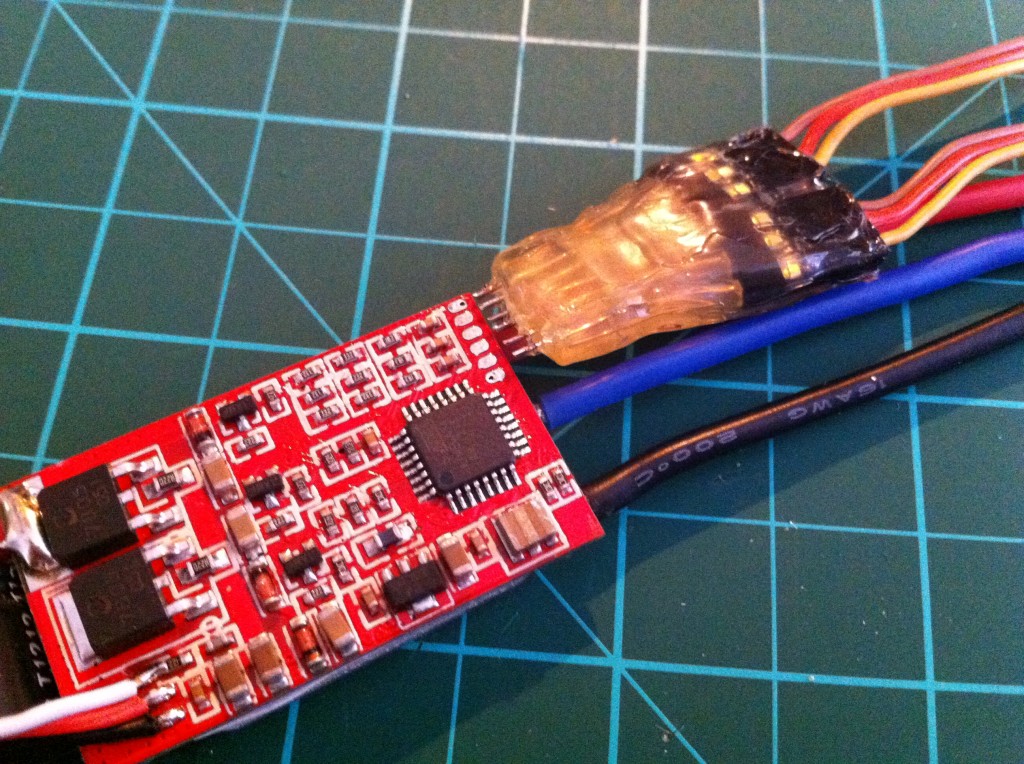
After flashing the ESCs I shortened the power leads for fitting the ESCs beneath the arms of the F450 frame and covered them with PVC heat shrink. I soldered each ESC, the battery connector and the DJI VU cable to the lower frame plate.
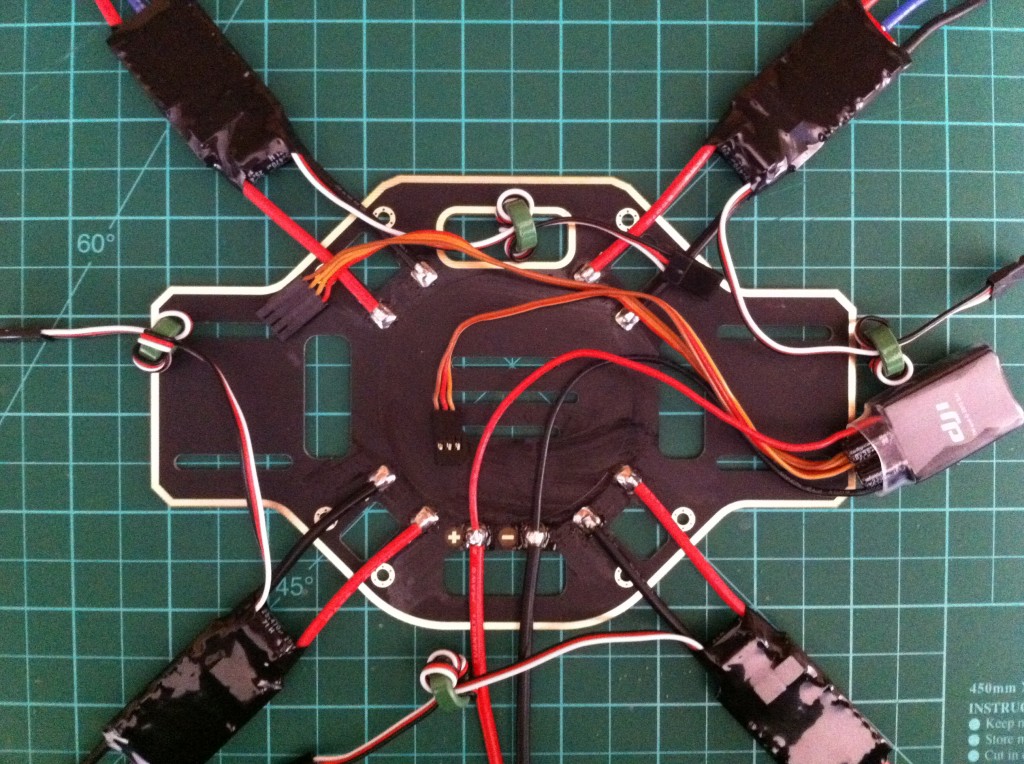
The naza is mounted at the center of the plate with the motor outputs facing forward. The ESCs are strapped to each arm with two cable ties.
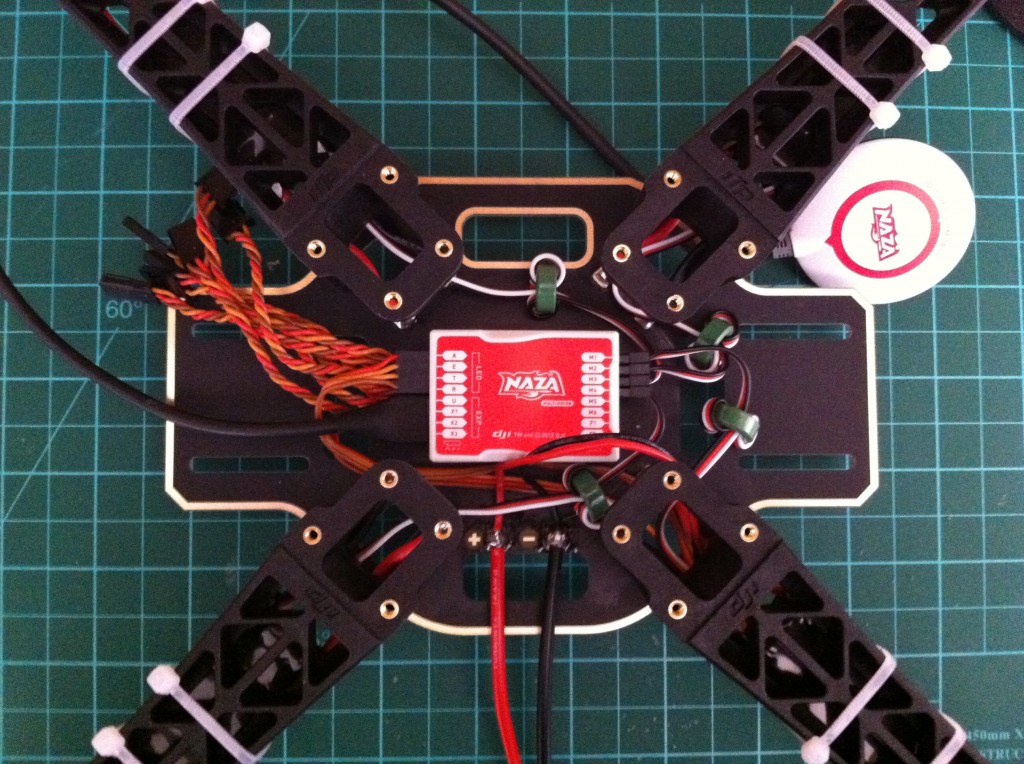
Finally, the remaining equipment is mounted to the frame.


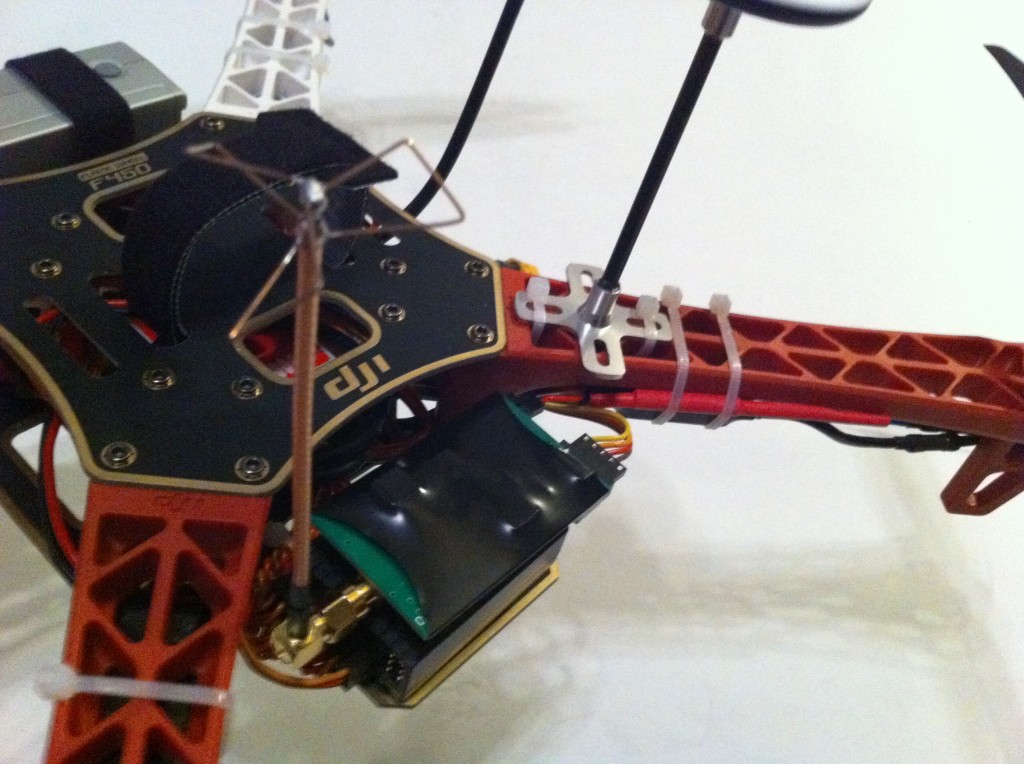
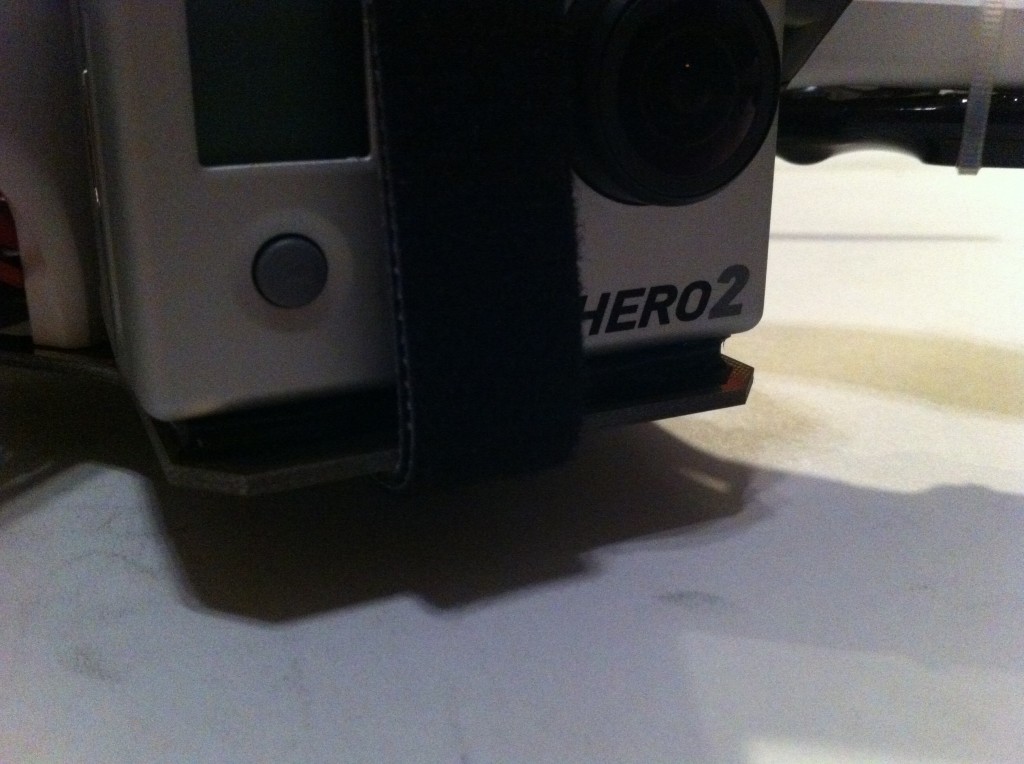
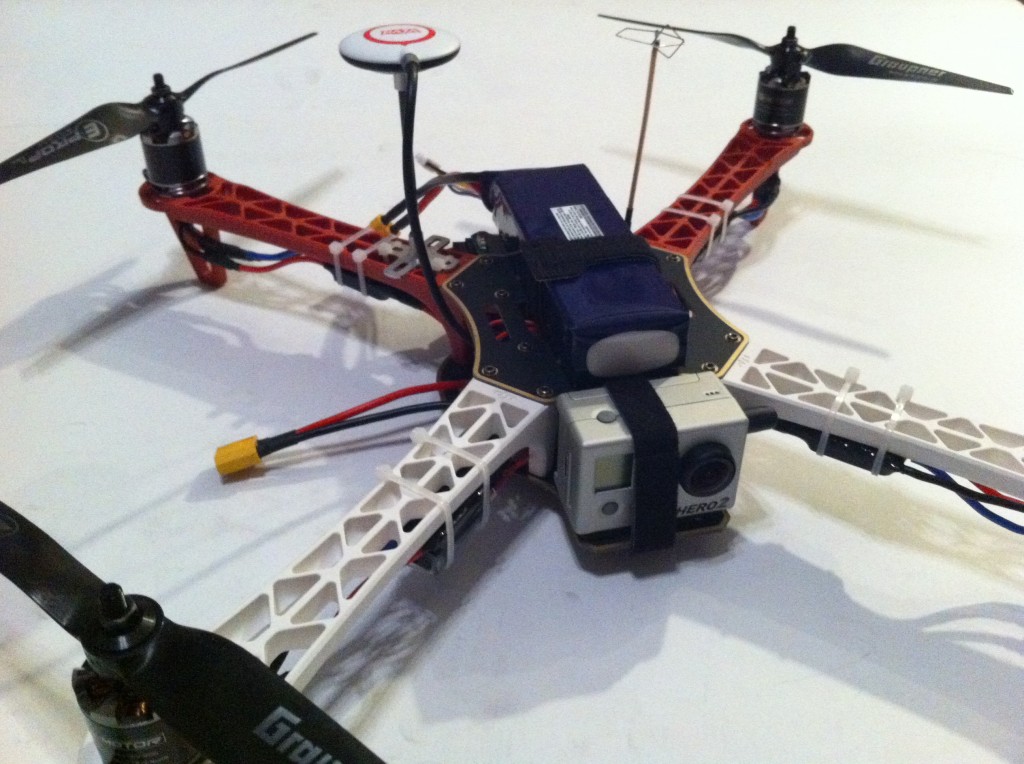
After flashing my Turnigy 9X transmitter with ER9X, I configured the following mixes for my controls:
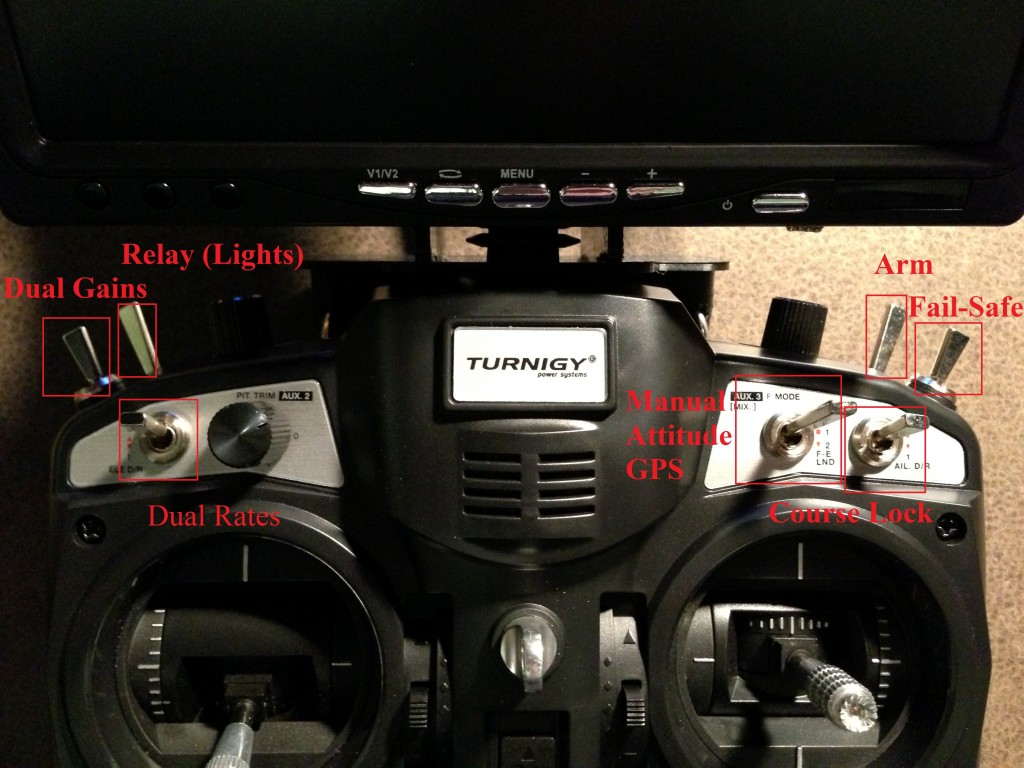
I wrote the following ER9X model with mixes that can be downloaded here.
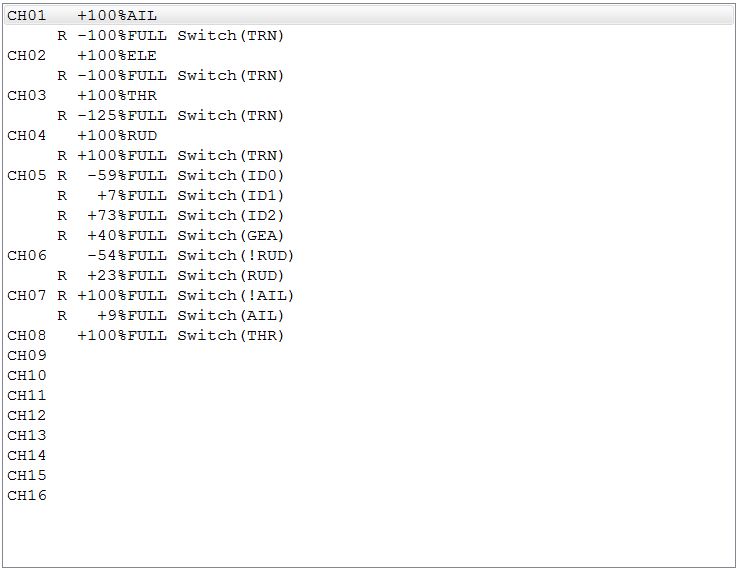
Within the Naza assistant I began by changing the basic settings such as the GPS antenna placement and motor mixer. With SimonK ESCs I set my idle speed to low.
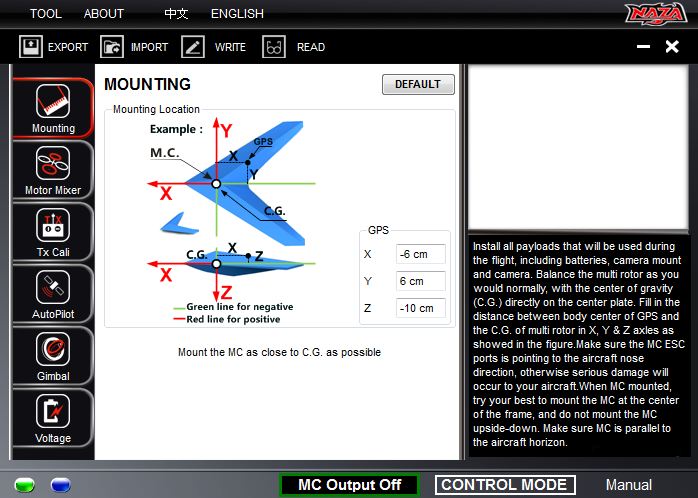
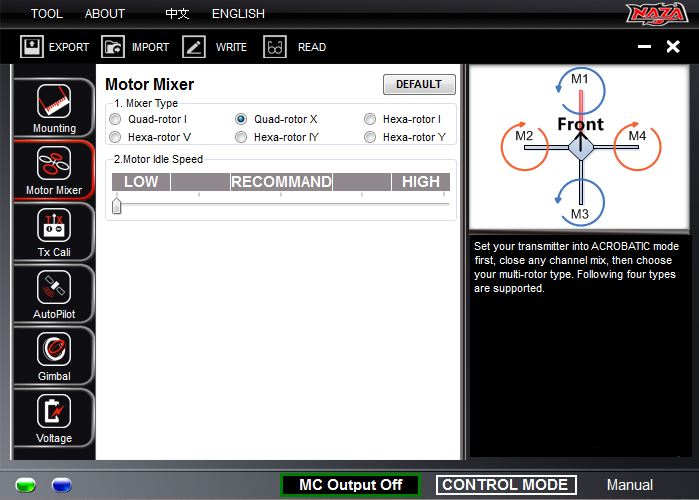 I chose to use a standard receiver setup with intelligent cut off. The ER9X mixer settings should be tested to ensure that the three position switch changes between manual, attitude and GPS mode.
I chose to use a standard receiver setup with intelligent cut off. The ER9X mixer settings should be tested to ensure that the three position switch changes between manual, attitude and GPS mode.

I first set the X1 (dual gain) switch to off and input the following settings. After toggling the X1 switch on, the gains should increase to the second set of values. This allows more control over the aircraft for FPV at low gains, and highly stable flight for AP at high gains. The X2 switch is set to enable course lock, I have chosen to use this instead of home lock, given the lack of an additional three position switch on my transmitter.
